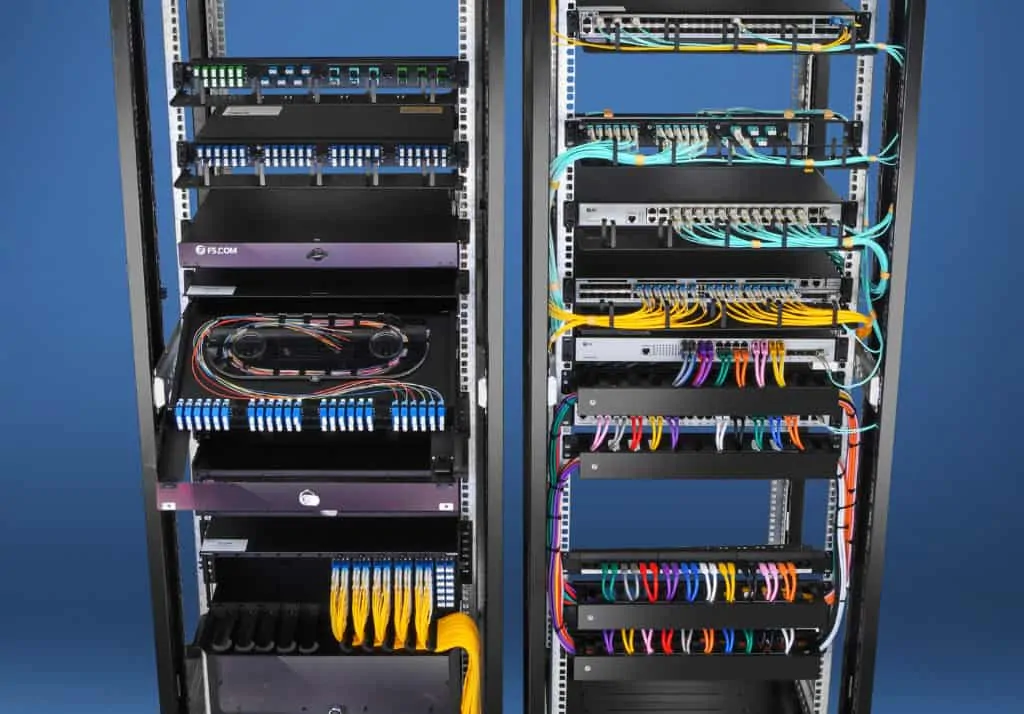It’s often a good idea to level-set on the basics.
Data centers are large buildings that house servers (we’ll explain what servers are in a moment). These buildings resemble warehouses from the outside. The key real estate difference between a data center and a warehouse is that data centers have very sophisticated security, HVAC, telecommunications, and electric power systems. They have to have these systems in order to protect the hardware inside, as well as to keep the hardware connected and running properly.
The Oxford Languages dictionary defines a data center as “a large group of networked computer servers typically used by organizations for the remote storage, processing, or distribution of large amounts of data.”
Data centers make the modern internet possible. When you stream a movie from Netflix, shop on Amazon, or scroll through Instagram, your experience depends in part on data centers.
Institutions of all types and sizes rely on data centers to serve their customers, constituents, and stakeholders. Not every institution builds their own data center however. If the institution’s need is relatively small, they might only need retail colocation services. On the other hand, if their need is relatively large, they might need wholesale colocation, or even to build their own data center. Tech giants like Facebook and Google often build their own data centers, but others, like Netflix, rely instead on cloud services like Amazon Web Services.
If an institution (we use that word here to encompass for-profits, non-profits, and government) opts for wholesale colocation, they have a variety of data center financing options and must carefully consider the geography of data center site selection.
What are servers?
Servers are essentially computers. They are rectangular hardware boxes that contain processors and other components.
The Oxford Language dictionary defines a server as “a computer or computer program which manages access to a centralized resource or service in a network.”
It helps to think of servers almost like an old-fashioned telephone switchboard, like the one shown below. The switchboard helped to route phone calls to the correct place. The switchboard operator played the role of the processor in that they decided where to route the call given the caller’s need and the available resources.

What is a server "rack"?
A rack is exactly what you’d guess…a vertical rack of stacked servers. That’s why a common industry phrase is “racking and stacking”, which refers to the manual labor involved in ensuring your data center hardware is installed properly. Here at Prime Data Centers, we partner with data center services providers like Salute Mission Critical to provide services to customers within our data centers.
Racks are typically open structures, as shown in the photo below, whereas “cabinets” are more enclosed versions.

How are data centers and servers related to the internet and "the cloud"?
Key to understanding the answer to the “what are data centers?” question is to understand the relationship between physical data centers, and the somewhat less tangible “cloud”. “The cloud” is a very broad term. At its most basic level, the cloud refers to processing and serving data in a different physical location than its point of use. For example, if you were to ask Siri (the voice assistant on your iPhone) for directions to the nearest sporting goods store, the information provided doesn’t come from a calculation on your phone. It comes from Apple’s cloud and the interconnections between that and other clouds.
There are many different types of clouds, including private, public, and hybrid. We’ll go into that in a future post. Subscribe and be sure not to miss it.
Data center trends in 2020
2020 has been a challenging year, to say the least. While it has negatively impacted most businesses, the net impact on the data center industry has been mixed. On the downside, companies are tightening budgets and delaying large capital expenditures. That is making data center sales cycles longer. On the upside, COVID-19 has reminded companies of the importance of having regularly-updated disaster recovery and business continuity plans. Data centers factor heavily into those plans. As part of the updating process, many companies are taking the opportunity to offload data center assets from their books, consolidate their data center presence, and backup critical data in more geographically safe and affordable locations.
For example, the San Francisco Bay Area is home to some of the most expensive real estate in the United States. It’s also quite seismically active. Despite that, the area is also one of the most popular data center regions. Why? Primarily due to the strength of telecommunication networks and the proximity to a sizable and important user base. Data center customers are realizing that the Sacramento area is a great data center site alternative to the SF Bay Area, with very low latency between the two regions, as well as much less seismic risk and greater affordability.
The future of data center development
Most types of data center development are trending up and likely will continue to do so for the foreseeable future. Certainly edge and hyperscale have bright futures. One downward development trend is companies building their own data centers. CBInsights makes a bold prediction in the graphic below that in the distant future we may not need physical data centers at all, at least not how we know them today. We can be quite sure however that physical data centers will remain mission-critical assets for enterprises of all types for the foreseeable future.
What are your thoughts? Let us know in the comments below. If we can help your business navigate data center decisions, contact us. We’d be happy to help.








